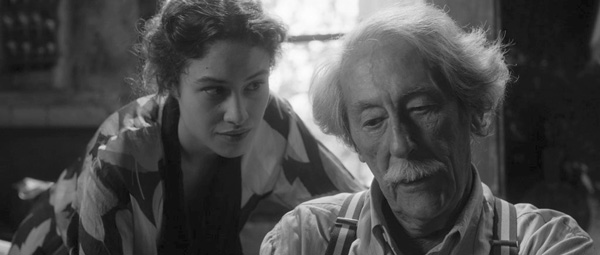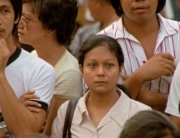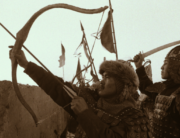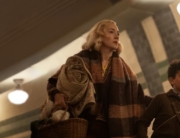Even if you’re not great with names, you’ll recognize 83-year-old actor Jean Rochefort—tall, with a regal bearing, and a mane of thick white hair. It’s an exaggeration to say he’s been in every French film since the mid-1950s, but you could make up a wonderful crash course following his career, especially in the last 25 years, where he’s been on a roll (The Hairdresser’s Husband, Ridicule, The Man on the Train). Another veteran, screenwriter Jean-Claude Carrière (The Discreet Charm of the Bourgeoisie and The Tin Drum), has given him a “last hurrah” role in The Artist and the Model, that is, if Rochefort were to step away from the camera. That’s not likely. According to IMDb.com, he has one film in post-production and he appears in at least one movie a year.
Rochefort plays Marc Cros, an internationally noted sculptor and a contemporary of Cezanne and Matisse living in a small town under German occupation in 1943. Rather than the artist-as-a-wild-man, he’s artist as observer. From the moment he appears on screen, while on a walk in the woods, he takes in nature, both its beauty and decay (which gently foreshadows what’s to come). But Cros hasn’t molded clay or chiseled stone for quite some time until his wife brings up the idea of employing a young Spanish refugee as a model. He could work and the girl, Mercè (Aida Folch), would have a place to live in his secluded studio, though she knows nothing about modeling or art. (She’s a wild child—she can catch fish with her bare hands—but a fast learner.) He cautiously agrees to the arrangement. Claudia Cardinale bemusedly plays the wife—and her husband’s former muse/model and keeper of secrets. The 1960s art-house sex symbol passes her touch onto actress Folch. With a heart-shaped face, full lips, brooding eyes, Folch’s resemblance to Cardinale is intentional.
The film’s tone is autumnal, or at least subdued, reflected in director Fernando Trueba’s decision to shoot it digitally in widescreen black and white—not your typical choice for a period piece set in the French Pyrenees. The look is still beautiful, but muted and well suited for this stark, terse, and matter-of-fact pas de deux between the demanding artist and the model. With understated performances and unabashed arty nudity, it’s drama au natural. In one episode, the world at war intrudes upon the afternoon modeling sessions when Mercè harbors an injured resistance fighter (Martin Gamet, with movie star looks). She hides him in the attic on the very day a German military officer, who also happens to be Cros’s biographer, pays the sculptor a visit. Other than this plot stirrer, this is essentially a two-hander.
Toward the end, the already sauntering film wanders off in one direction, leaving the audience behind. The audience sees Mercè mostly through Cros’s eyes, whether she strikes a pose or when he surreptitiously watches her. But how and why her feelings change for her mentor is not clearly drawn. Her reactions are not so much ambiguous as they are abrupt. It’s not that their evolving relationship isn’t believable; it just feels as if it goes by plan. The screenplay then heads towards a conclusion that contradicts the vitality of what we have seen take place between artist and model, raising, but not answering, more than a few questions. The muted film becomes as reticent as its main character.







Leave A Comment